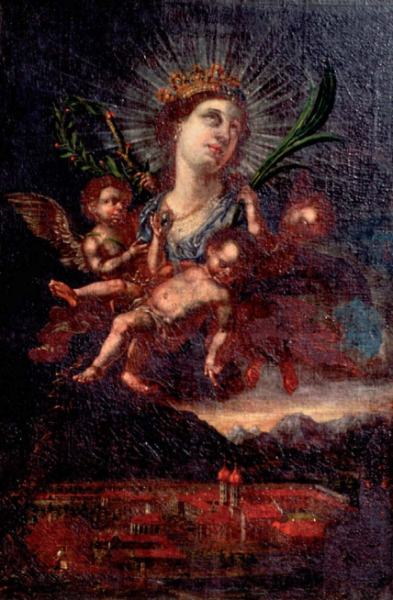The Anastasia Miracle in 1704
In the midst of the Spanish Succession War, a remarkable and unexpected föhn event unfolded in the winter of 1704 in the northern Alpine region, forever etching itself into the annals of weather history. This event, known as the “Anastasia Miracle,” was intricately woven into the larger tapestry of a conflict that had engulfed Europe. It offered a tale of nature’s intervention, a twist of fate that would save a Bavarian monastery from imminent danger.
The backdrop for this extraordinary event was the ongoing Spanish Succession War, which had raged on since 1701. Bavaria and Tyrol had become significant strategic areas for the imperial forces, with Max Emanuel, the Elector of Bavaria, harboring ambitions of regaining Tyrol for his territory. In the early months of 1703, Bavarian troops entered Tyrol, taking Innsbruck. However, their occupation was met with fierce resistance from the Tyrolean peasantry, who, despite being poorly trained, were deeply motivated to defend their homeland.
In the summer of 1703, within a span of just eight weeks, Max Emanuel and his army faced a humiliating defeat at the hands of the Tyrolean peasantry. The defeat marked the inglorious end of Max Emanuel’s Tyrolean adventure. In the wake of this defeat, the Tyroleans contemplated revenge against Bavaria.
Their opportunity arose in January 1704 when unusually low winter temperatures caused lakes and rivers in the northern Alpine region, including Lake Kochel, to freeze solid. This extraordinary natural occurrence presented the Tyroleans with a unique chance to launch an attack on Bavaria and plunder the Benedictine monastery of Benediktbeuern, which they held responsible for Max Emanuel’s actions.
The Tyrolean forces, consisting of 2000 horsemen and soldiers, set out on a daring mission on the morning of January 28, 1704. They followed a secret plan, taking secondary roads to keep their approach hidden. As they moved along the Loisach River Valley, passing through villages, their presence was discovered by residents who later informed the monastery of the impending threat.
The Tyroleans intended to cross the frozen swamps and the River Loisach to reach the monastery by evening. Lake Kochel was so solidly frozen that even heavy-load vehicles and 1000 men could have traversed it comfortably. As news of the approaching troops reached the monastery, panic set in among its inhabitants.
In their desperate hour, the monks turned to prayer. The next day, January 29, was the feast day of St. Anastasia, and a liturgical vespers was traditionally held on the preceding evening to honor her. The monks prayed fervently to St. Anastasia for her protection.
As the Tyrolean troops drew nearer to the treacherous frozen swamps, an astonishing turn of events unfolded. A remarkably warm wind, known as a föhn, swept through the region, causing the ice on the swamps to rapidly melt. Within hours, what was once a white expanse of frozen terrain turned black, rendering it impassable for horses.
The Tyrolean forces, now confronted with melting ice and unsound surfaces, found their advance thwarted. Meichelbeck, a chronicler of the time, noted that the wind remained persistently warm, further hampering their progress.
In the end, the “Anastasia Miracle” had spared the Benedictine monastery of Benediktbeuern from imminent destruction. The monks, who had placed their faith in St. Anastasia, saw their prayers answered as nature’s intervention had saved their sacred haven from a vengeful Tyrolean force.
This extraordinary event remains a testament to the unpredictable forces of nature and the interplay between history, faith, and climatic conditions. The Anastasia Miracle stands as a remarkable chapter in the annals of weather history, a reminder of the inexplicable ways in which the natural world can shape human events.
Category: Alabama's Weather, ALL POSTS, Met 101/Weather History
















